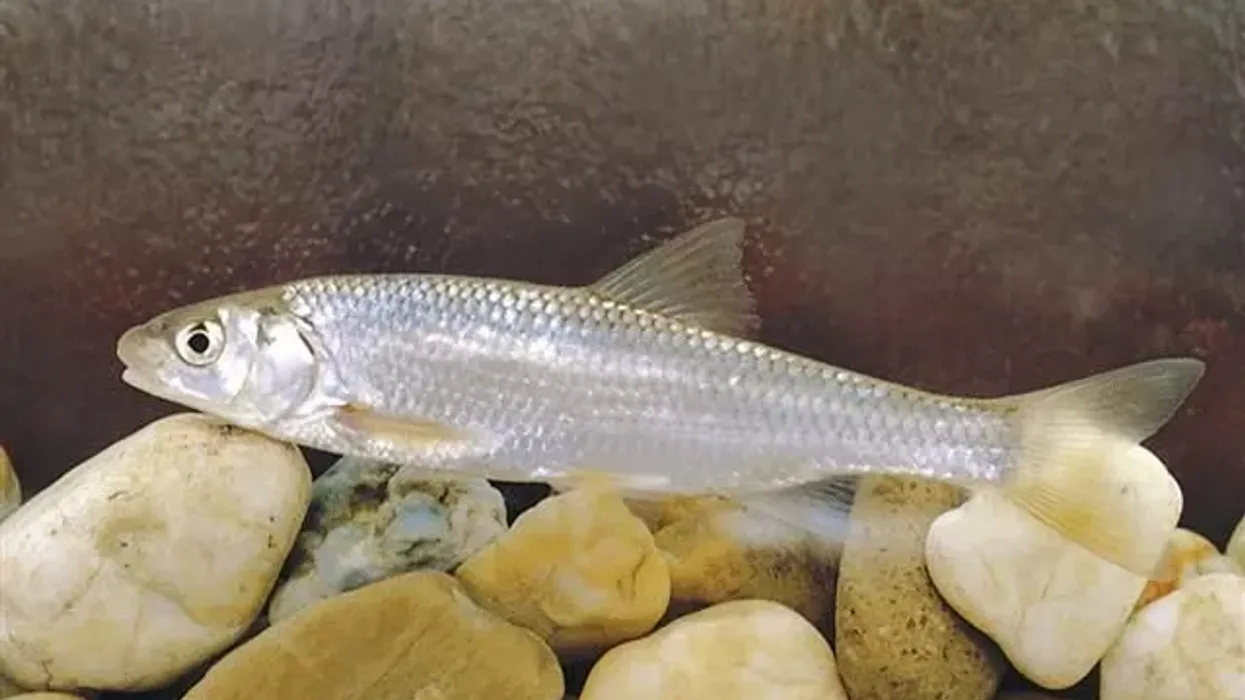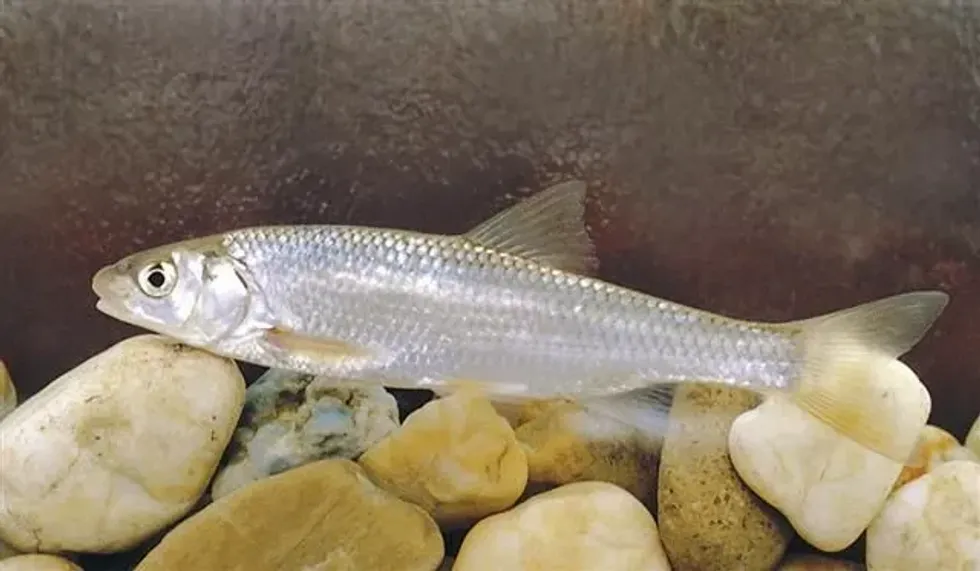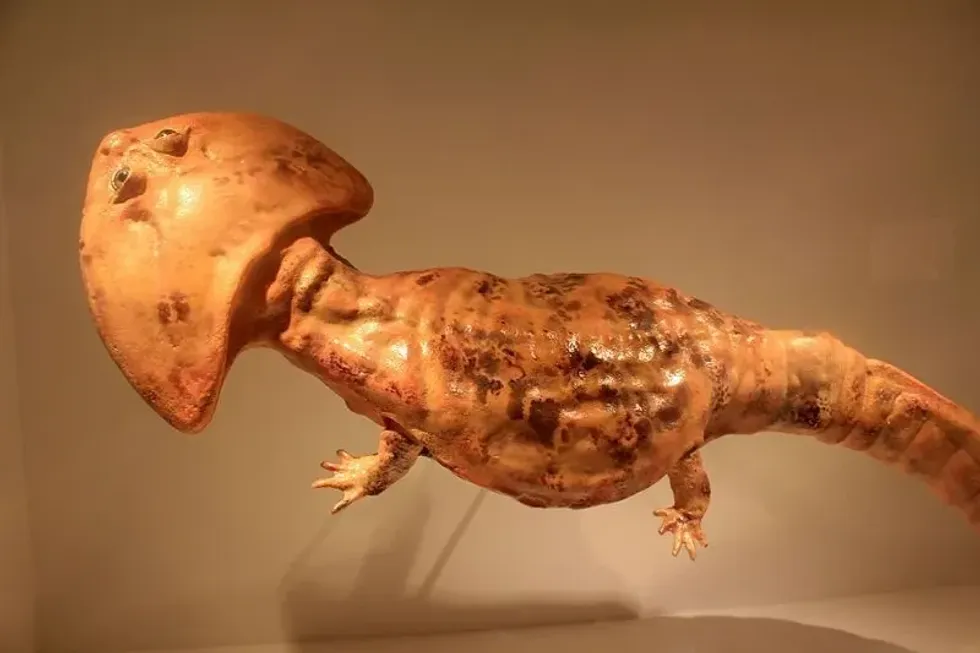The Orthodon microlepidotus is a popular fish of North America, mainly in the central California region. The common name of this fish is Orthodon microlepidotus. This cyprinid is the only member belonging to the genus Orthodon.
The Sacramento blackfish thrives in freshwater habitats. It is native to the San Joaquin and Sacramento Rivers. They are also a common sight in Salinas River, Humboldt River, Clear Lake, small creeks leading straight to the San Francisco Bay, Russian River, and even the Pajaro River. This species may also be found in Nevada.
The common name of the fish clearly specifies its color; it has a black to dark grey body with an olive glossy sheen. This fish has a specific organ at the roof of its mouth which helps it to feed efficiently.
For more relatable content, check out these koi facts and rainbow trout facts for kids.
Sacramento Blackfish Interesting Facts
What type of animal is a Sacramento blackfish?
The Sacramento blackfish is a type of cyprinid.
What class of animal does a Sacramento blackfish belong to?
The Sacramento blackfish (Orthodon microlepidotus) belongs to the class of fishes.
How many Sacramento blackfishes are there in the world?
We are not aware of this information as their population has not been recorded.
Where does a Sacramento blackfish live?
The Sacramento blackfish is most abundantly found in regions of central California and Nevada. The main places to spot them are the Sacramento and San Joaquin Rivers.
You can also search for them in the Salinas River, Pajaro River, Santa Ana River, Humboldt River drainage, Clear Lake, and even the San Francisco Bay. It is believed that a small population of this species is also introduced in the Russian River.
What is a Sacramento blackfish's habitat?
This species is a freshwater fish. They prefer the warm, turbid, and cloudy waters of water bodies. They are also known to thrive in sloughs, reservoirs, and oxbow lakes.
Who do Sacramento blackfishes live with?
This dark gray fish is said to live in small groups.
How long does a Sacramento blackfish live?
The Sacramento blackfish (Orthodon microlepidotus) is said to live for a maximum of five years.
How do they reproduce?
These fishes are said to mature at around 2-3 years old. Male fishes are said to mature before females. The breeding season begins from the spring season and may extend through the early days of warm summer.
The number of eggs produced depends on the body size of the female fish. Spawning beds are found around any area having shallow waters but thick vegetation. The male blackfish fertilizes the eggs of the female in clear, shallow waters.
Reproductive activities include a lot of stress, and spawning is also a little difficult for the blackfishes. Thus, many of them pass away just after two seasons.
However, some of them are said to reproduce up to four times. The laid eggs cling on to the surface of the nearby substrate. The young larvae then emerge and continue the search for food around this area itself.
What is their conservation status?
The conservation status of the Sacramento blackfish (Orthodon microlepidotus) in the IUCN Red List of Threatened Species is 'Least Concern'.
Sacramento Blackfish Fun Facts
What do Sacramento Blackfishes look like?
This fish is known for its glossy, shiny black skin. This may not always be true, as most specimens have dark gray bodies with a light olive sheen.
The young fish have more of a silver hue, but this color darkens as it grows older. This fish has round elongated anatomy. The scales on the Sacramento blackfish are very small, with about 90-115 being arranged along the lateral line.
The forehead of the blackish demonstrates a straight-line profile. The mouth is slightly oblique upwards, and the eyes are small. There are about 9-11 rays on the dorsal fin, which is placed just behind the blackfish’s pelvic fins.
The pelvic fins are adorned with 10 rays, whereas the anal fin has only 8-9 rays. The Sacramento blackfish has long, knife-shaped sharp pharyngeal teeth placed within the mouth.
The grinding surface where the blackfish processes and chews its food is narrow. The caudal peduncle is also long and narrow.
The head is almost cone-shaped, and the mouth is lined with thin lips. During the breeding season, the male fishes of this species develop even darker coloration and may grow specific breeding tubercles. The male specimens grow quickly in the first two years, reaching the maximum body length.

*Please note that this is an image of a Leuciscus leuciscus, which belongs to the same subfamily as the Sacramento blackfish (Orthodon microlepidotus). If you have an image of a Sacramento blackfish, please let us know at hello@kidadl.com.
How cute are they?
We would not call this dark grey fish cute, sorry!
How do they communicate?
All fish are known to communicate with gestures, motions, bioluminescence, or electrical pulses.
How big is a Sacramento blackfish?
An adult Sacramento blackfish can grow up to 21.65 in (55cm) in length, but usually, they are about 13.78 in (35 cm) long.
This makes them about five times the size of medium anchovies.
How fast can a Sacramento blackfish swim?
Yikes, we do not know how fast these dark fishes of California can swim!
How much does a Sacramento blackfish weigh?
Most specimens of the Sacramento blackfish species weigh about 2 lb (0.907 kg), but some of them have grown up to 5 lb (2.268 kg).
What are the male and female names of the species?
Neither the male nor the female fish of this species has specific names.
What would you call a baby Sacramento blackfish?
A baby fish, in general, is referred to as fry.
What do they eat?
This member of the Cyprinidae family has a wide variety of dishes in its diet. Sacramento blackfish are known to filter feed on platonic algae, insects like giant water bug, zooplankton, rotifers, cladocerans, diatoms, and even copepods.
Younger blackfish individually pick at their food items. The adult fishes have a different technique though - they use the gills as well as the oral cavity to filter out food items from the water and feed on them.
In rapid bursts, the fish opens and closes its mouth to pump out the large bursts of water. A patch of mucus is released from the palatal organ, which catches the tiny food bits.
The palatal organ is placed on the roof of the mouth. These food bits are then swallowed along with the mucus.
Algae has been noticed to be a major part of its diet. Large blackfishes are able to filter out more efficiently than the young ones.
Are they dangerous?
Absolutely not, this member of the Orthodon genus is not dangerous to humans.
Would they make a good pet?
The Sacramento blackfish (Orthodon microlepidotus) has minimal environmental requirements. It needs clean water with warm temperatures. We do think these requirements can be met and they can be a good pet!
Did you know...
Clear Lake is said to be one of the oldest lakes in the world and has been home to multiple marine creatures.
The San Joaquin River solely provides for the eight counties of the San Joaquin valley.
This fish has a special place in the commercial fisheries and is a common sight in the Asian fish markets located in California.
The Sacramento blackfish is viewed as a good aquaculture species.
It is said that continual glacial episodes from two million years ago have caused a major part of the San Joaquin Valley to become a new freshwater lake.
The creek system of San Francisco Bay is well viewed from the Golden Gate Bridge.
Other fishes belonging to the Cyprinidae family include fathead minnow and dace.
Are Sacramento blackfishes endangered?
Though the Sacramento blackfish (Orthodon microlepidotus) has been labeled as ‘Least Concern’ by the IUCN Red List of Threatened Species, the population of the Sacramento blackfish has been considerably decreasing. This has shown low risks of endangerments.
There is no exact number of the total individuals surviving. It has been said that water pollution, overfishing, and other environmental stress cause the blackfish numbers to decrease.
What do Sacramento blackfish do for the ecosystem?
The Sacramento blackfish (Orthodon microlepidotus) is well praised for its ability to thrive in different environmental situations. They are even able to adapt to varying water temperatures.
Scientific researches have found out that these fishes are able to survive in slightly hypoxic environments as well. This helps in maintaining a good balance in the water eco-system, and acts as a good survival mechanism.
Here at Kidadl, we have carefully created lots of interesting family-friendly animal facts for everyone to discover! For more relatable content, check out these gar facts and Arctic char facts pages .
You can even occupy yourself at home by coloring in one of our free printable Sacramento blackfish coloring pages.
*Please note that this is an image of a Leuciscus leuciscus, which belongs to the same subfamily as the Sacramento blackfish (Orthodon microlepidotus). If you have an image of a Sacramento blackfish, please let us know at hello@kidadl.com.








